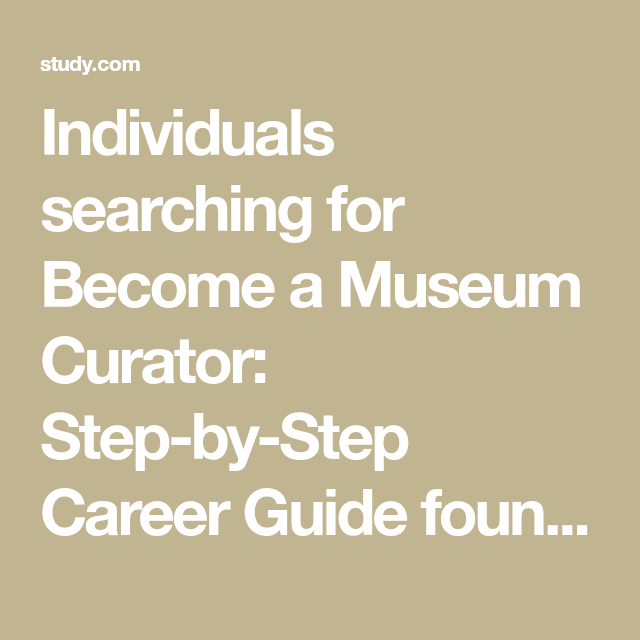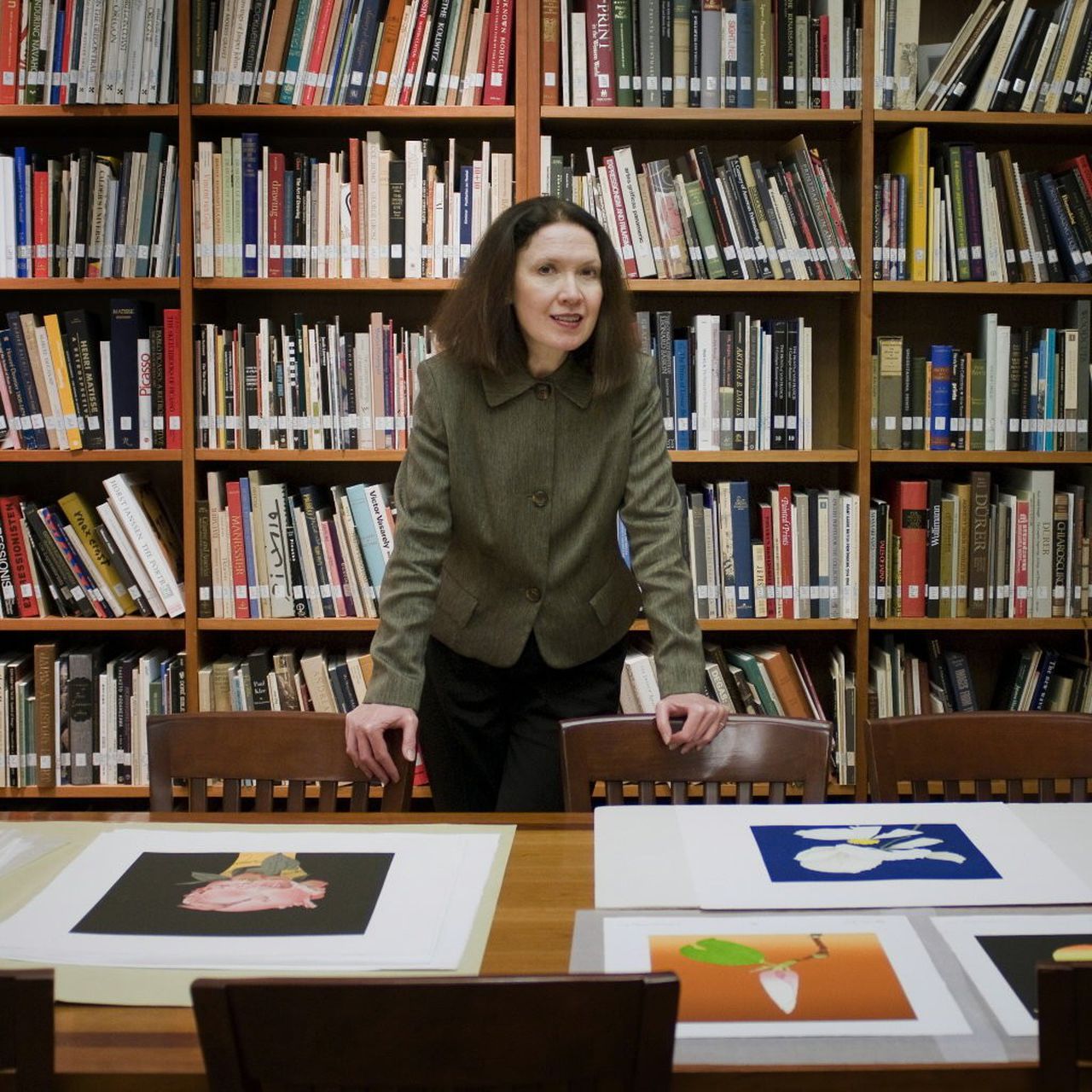The Curator Of A Museum
It is the job of museum curators to acquire and maintain the museums collection. Research and writing for professional journals may also fall under the purview of these experts. Curators typically fall into one of two categories. Section curators are in charge of a specific section of the museum, whereas general curators oversee the entire museum as a whole.
Museum curators also manage the acquisition, preservation and display of museum artifacts, as well as overseeing the museums collections. Curators may also be tasked with verifying the provenance and age of objects in their care. The museums board of directors, which is in charge of fundraising, public relations, and site management, can provide guidance. Curators in this position may be asked to present budget figures for the museums future purchase of exhibit items.
Do You Need A Master’s Degree For A Museum Career
After earning your bachelors degree, the next step in the process of becoming a museum curator is to earn your masters degree. Although some curators may find a position at a small institution with just a bachelors degree, its standard for these professionals to have a graduate degree. This is particularly true for curators who plan to pursue careers at larger institutions and those who aspire to higher-level positions.
If you earned a general history degree as an undergraduate, then you may wish to choose a narrower focus for your masters degree. For instance, you might wish to earn a masters degree in museum studies, archival studies or history with a concentration in a specific geographical region or time period.
Like undergraduate degrees in the humanities and social sciences, its entirely possible to complete your masters degree 100% online for your convenience. While pursuing your masters, you can generally expect to take classes that focus more narrowly on your chosen specialization, in contrast to undergraduate courses, which typically have a broader scope. It is also customary to complete a masters thesis, which is a lengthy research paper.
What Do Museum Curators Do
Some museum curator positions require a bachelors degree in art, archeology, history, museum studies, or a related field, but many museums now require candidates to hold a masters degree. You may need a doctorate to move into supervisory roles. Volunteer at a local museum to gain hands-on experience in the field. Learn how to bid or apply for different artifacts and the proper way to handle them. You can find museum curator positions at museums, historic sites, nature centers, and zoos.
Don’t Miss: Arizona Commemorative Air Force Museum
What Are The Other Details Of The Art Curator
Curators are responsible for the care and management of collections of artwork and artifacts, typically in museums and galleries. A curator may actively select and interpret the exhibited items and write catalog essays.
To become a curator, you will need at least a masters degree in art history or museum studies. Many curators also have degrees in other fields, such as fine art or conservation. The job market for curators is competitive, but various curatorial jobs are available.
The salary for an art curator can vary depending on the institution, but entry-level positions in the United States typically start around $20,000 per year. Curators typically work full time during regular business hours but may also need to work evenings and weekends to attend events.
The work environment can be fast-paced and stressful at times, but it is also exciting and intellectually stimulating. If you have a passion for art and have strong research and communication skills, a career as an art curator may be the right choice.
Getting The Right Education

Read Also: Los Angeles Museum Of Love
Career Crush: What Does It Take To Be A Museum Curator
Where your work meets your life. See more from Ascend here.
I love museums. But the last thing Im thinking about when Im walking through one is the person who hung the frame up on the wall or the person who wrote the description next to the masterpiece. And thats a good thing! At least, thats what I learned when I talked to Natalie Bell about what its like to be a museum curator.
In this episode, Natalie, the curator at the MIT List Visual Arts Center, explains that curation is all about helping artists bring their ideas to life but its not all rainbows. She explains that the museum world is very competitive, a fair salary can be hard to find, and theres a lot of work to be done to improve what can be a tough industry. But despite it all, her passion for art is what makes it worth it.
If youre interested in this career path, Natalie shares some concrete tips on how to move forward, including: Avoid unpaid internships if you can, look for similar jobs outside of the museum world, and dont be afraid to start small and curate your own show.
Read the full interview below for more insights from Natalie.
Kelsey Alpaio: So what exactly is a museum curator?
What does the day-to-day look like for a museum curator?
What do you love about your job?
So, its an important role and something that that Ive always both enjoyed and taken seriously to help people understand what theyre looking at, what theyre encountering, and what theyre experiencing.
Art Curator Is A Rewarding Career The Question Is How Can You Become One
Art curatorial education and career have been heightened to be a critical part of the art world over the past few decades and becoming the top choice for many art students.
Notably, the word curating has turned into a buzzword that prevails in many industries recently. The newfound popularity of this word manifests the importance and influence of the art curating profession and how does it shape peoples perception of art as well as their day-to-day life.
However, an art curators job is unique and much more intricate than many people assume, which requires depth knowledge and abundant experience in specific art and design areas.
So, how to become an art curator? The first step to set yourself on a flourishing career as an art curator is all about the basics, what is an art curator, what does this job entail, and the career path of becoming one.
Recommended Reading: Alcatraz Crime Museum Pigeon Forge
Charlie J Meyers Artist & Founder Of The Moon Cheese Curator
Iâm obsessed with communication, building community, and self-initiated projects. When thereâs a gap or need, my first thought is âWhy doesnât this exist and how can we make it happen?â. Starting in graduate school, I saw the lack of communication between the English & French programs and started a social media platform to promote and connect everyone together. This led to assisting with curations in artist-run centers and other collaborations. At the beginning of the pandemic, I saw that everything was going online and suddenly amazing online exhibition platforms were being coded! I started Moon Cheese so disabled and non-disabled artists, could come together and have their work shown in online spaces during the quarantine, and it grew from there. I think online exhibition spaces are here to stay and they make a great complement to IRL shows, but can also stand on their own as contemporary spaces. Accessibility is inclusivity and itâs also oh so delicious! There is never enough art in my life, so having a whole show one click away only makes life richer. I see myself as part of a big art stew, helping make sure more people can get a taste.
What Challenges Does A Curator Face In Their Job
An art curator is responsible for caring for and presenting the collection of artwork. It can be daunting, requiring knowledge of art history, an eye for detail, and organizational skills. In addition, a curator must be able to work with various people, including artists, gallery owners, and the general public.
One of the biggest challenges a curator faces is preserving the integrity of the collection. This means ensuring that each piece is appropriately protected from light, heat, and humidity. It also means keeping accurate records of each piece so it can be properly identified and authenticated.
Another challenge is selecting which pieces to include in the collection. This requires a keen eye for quality and an understanding of the collections overall theme. Finally, a curator must effectively market the display to the public, including promoting exhibitions and educational programs and creating marketing materials such as brochures and website content.
Also Check: The Children’s Museum Of Indianapolis
What Does A Museum Curator Do
Museum curators design, install and arrange installations in museums, such as an art or history exhibit. They spend their days negotiating the acquisition of arts and planning their installation. A museum curator might specialize in a special area of art or work broadly in museums that offer a variety of exhibits.
Curators aren’t only responsible for the exhibits they also handle administrative duties around the museum and are often responsible for planning events, lectures, workshops and other activities centered around the artists and exhibits. A museum curator is an essential player in museum administration who liaises between administrators, artists and museum-goers to create the ultimate experience for people who enjoy art and other museum installations.
Related: History Degree Jobs
What Archivists Curators And Museum Workers Do About This Section
Archivists appraise, process, catalog, and preserve permanent records and historically valuable documents. Curators oversee collections of artwork and historical items and may conduct public service activities for an institution. Museum technicians and conservators prepare and restore objects and documents in museum collections and exhibits.
Also Check: Friends Museum New York City
Earning Potential For An Art Curator
A museum or art gallery typically employs art curators full time. Salaries for art curators vary depending on a number of factors such as where the institution is located, the size and financial health of the institution theyre employed by and also the curators years of experience and formal education. Their specific job and duties can also affect their salary. For instance, many curators may also be the manager or director of museum or gallery. The average salary for a gallery manager is $183,798 per year.
Recommended Reading: Whitney Museum Of American Art Nyc
Who Is A Museum Curator

Museum Curators are responsible for collecting, cataloguing, managing and presenting or displaying artistic, historical and cultural collections in galleries or museums.
Part of their job is to regularly visit artists studios to check their latest works and subsequently select relevant art pieces for exhibitions. If visiting museums or art exhibitions make your heart buzz with excitement, then you should consider becoming a Museum Curator! With this career, you will be able to hop from one exhibition to another, appreciating both historical and modern art. You will also be meeting people from different backgrounds as you meet with them to build re…
Recommended Reading: Wax Museum In Hollywood California
How To Become A Museum Curator
You can get into this job through:
- a university course
You’ll often need a degree in a relevant subject like:
- fine art or art history
- museum or heritage studies
You might also find it useful to have a postgraduate qualification in museum and gallery studies, or in a particular style or period of art or history.
Paid or unpaid work experience in a museum, gallery or heritage property is usually essential to apply for courses and jobs.
Entry requirements
- 2 to 3 A levels, or equivalent, for a degree
- a degree in any subject for a postgraduate course
More Information
Average Museum Curator Salary
The U.S. Bureau of Labor Statistics lists the median salary for archivists, curators, and museum workers in 2020 as $52,000 per year, or around $25 per hour. While this isnt particularly lucrative, remember that this is the median: theres also the potential to earn more when youre experienced. This also includes staff who work in museums, such as in the ticket office. Not all museum workers are specialist curators.
The BLS also notes that theres much faster than average growth in this career, meaning that well-trained and skilled curators will likely have good job security in the next decade.
Read Also: Vatican Museum Online Ticket Reservation
How To Become A Curator Of An Art Gallery
To become a museum or art gallery curator you generally need an arts or science degree at university with a major in a relevant area, such as anthropology, archaeology, fine arts, history, or cultural studies. To get into degree courses you usually need to gain your senior secondary school certificate or equivalent.
How To Get The Job
APPLY
Look at job-search resources like Indeed.com, Monster.com, and Glassdoor.com for available positions. You can also visit the websites of individual museums or visit them in person to apply to existing job openings.
FIND AN ART CURATOR VOLUNTEER OPPORTUNITY
Look for an opportunIty to do volunteer work through online sites such as VolunteerMatch.org. You can also contact various museums directly and volunteer your curatorial services.
NETWORK
Many jobs are available at universities and colleges. Attend events sponsored by the schools or approach personnel at the museums directly to inquire about potential positions.
You May Like: Museum Of The Rockies Events
How To Become A Curator
wikiHow is a wiki, similar to Wikipedia, which means that many of our articles are co-written by multiple authors. To create this article, 9 people, some anonymous, worked to edit and improve it over time. This article has been viewed 24,369 times.
Curators are responsible for managing a museum, botanical garden, historic site or nature center. They are responsible for educating the public about history, science, art, or any number of fascinating topics. It can be an extremely rewarding career, but the road can be long. There are a few things you can do to make sure you have the best application possible for a curator job.
Research Artists And Artworks
Another critical responsibility of a curator is to research artists and artworks. It involves keeping up with current trends in the art world and researching specific artists or artworks that the institution might wish to acquire. The curator will also be responsible for the provenance of pieces already owned.
Also Check: Where Can I Watch Night At The Museum
What Skills Do You Need To Be A Museum Curator
Management is no easy task, and as such, the skill requirements for these types of roles vary greatly. Chief skills for this role are: Program Evaluation, Trend Analysis, Performance Metrics, Program Enhancements. You would need to be proficient in the following: Museum Software. Expertise in these areas will help you land this, or a similar role.
Where Can I Study To Be A Curator

14 curatorial training programmes in North America
- Curatorial Studies Program New York Institute of Fine Arts and Metropolitan Museum of Art. …
- Curator-in-Training Program Western Illinois Museum. …
- MA Curatorial Practice School of Visual Arts New York City. …
- Curators LAB Design Cloud Gallery.
Read Also: National Museum Of The American Indian Washington Dc
What Education Do You Need To Be An Art Curator
To become a museum or art gallery curator you generally need an arts or science degree at university with a major in a relevant area, such as anthropology, archaeology, fine arts, history, or cultural studies. To get into degree courses you usually need to gain your senior secondary school certificate or equivalent.
Read Also: Natural History Museum New York Price
Work Environment About This Section
Archivists, curators, and museum workers held about 33,600 jobs in 2021. Employment in the detailed occupations that make up archivists, curators, and museum workers was distributed as follows:
| Curators |
| Educational services state, local, and private | 18 |
Depending on the size of the institution and the position archivists, curators, and museum workers hold, these workers may spend time either at a desk or with the public, providing reference assistance and educational services. Museum workers who restore and set up exhibits or work with bulky, heavy record containers may have to lift objects, climb ladders and scaffolding, and stretch to reach items.
Recommended Reading: World War Museum Kansas City
Organize And Arrange Exhibitions For The Public
One of the most important roles of a curator is to organize and arrange exhibitions for the public. This involves working with artists, negotiating loans from other institutions, and ensuring that the work is installed correctly and lit. They will also look into how the artworks will be displayed and often write didactic materials to accompany the exhibition.